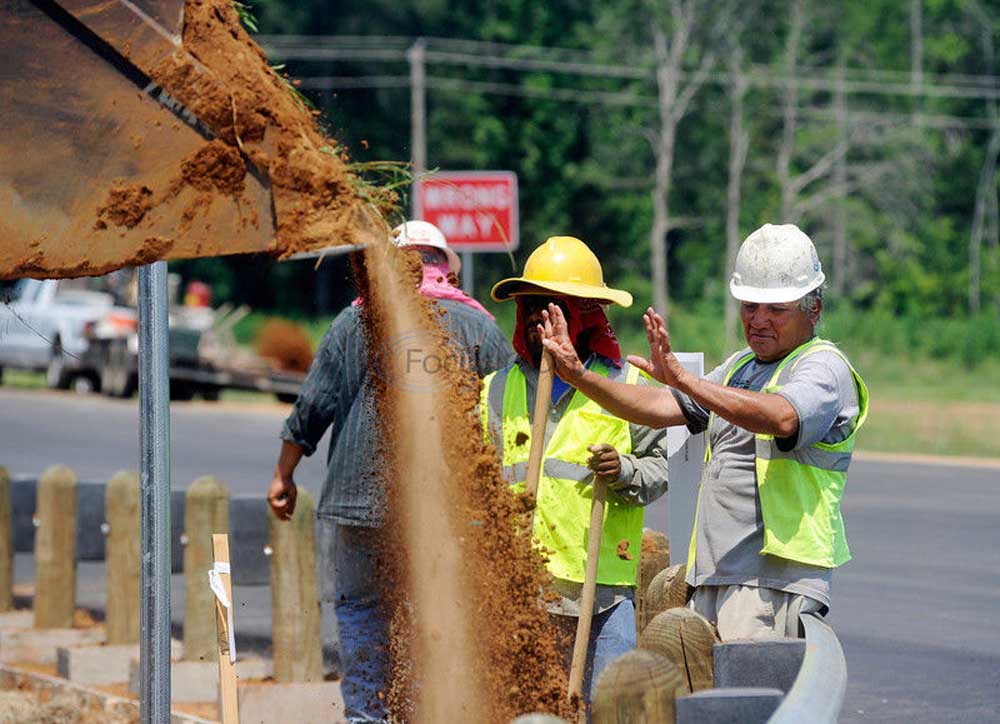More drivers using Toll 49
Published 10:15 pm Saturday, April 26, 2014

- Sarah A. Miller/Tyler Morning Telegraph A construction crew works to stabilize the guardrail on segment five of Toll 49 near Highway in 2012.
Taylor Swinford is a frequent user of Toll 49.
Swinford, who works at the Quality Investments dealership on U.S. Highway 69 North, said he uses the toll road when he’s going home to south Tyler or headed to the interstate. His brother also uses it when he comes to Tyler.
“I personally think it’s awesome, because I can get to (Interstate) 20 in like 20 minutes,” he said.
And although he has noticed a slight decrease in traffic around his workplace since Toll 49 opened to Interstate 20, he said he has not seen a significant impact on the dealership.
It’s been about a year since the opening of the two-lane, 9.62-mile Segment 3B of Toll 49, which connects Texas Highway 31 to the interstate.
With its completion, Toll 49 now stretches from Highway 110 South in Whitehouse around Tyler’s west side to Interstate 20 near Lindale. Driving the full length of it costs passenger cars $3.33 with a toll tag and $7.01, including a $1 processing fee, without a toll tag.
Toll 49 averages about 26,000 transactions per day, said Everett Owen, interim executive director of the Northeast Texas Regional Mobility Authority. An individual driving the entire stretch of Toll 49 would mean four transactions.
Traffic projections are usually done assuming a ramp-up period of three to five years, Owen said, but with Toll 49, it was a one or two-month ramp-up period.
“So in essence what has happened because the community knew so much about the road (before it opened), it didn’t take long for people to know it’s there and to start using it. Really what has happened is it’s just gotten a lot of use before expected,” Owen said.
He estimated that 20 percent to 25 percent of drivers are using Toll 49 to get into Tyler from the interstate instead of using Loop 323.
He said overall the toll road likely hasn’t had a huge negative impact on the amount of traffic on Loop 323 because people using the toll road, in general, are passing through, going from one place to another, rather than stopping in town to shop.
In Lindale, the economic development corporation does not receive a report on sales from individual retailers, but city sales tax continues to be up on a regular basis, said John Clary, president of the Lindale Economic Development Corp.
In the future, Clary said, additional growth along the I-20 corridor in Lindale is expected, and there are some things already happening in the U.S. 69 and I-20 corridor.
For instance, a new restaurant is set to open at the old Juanita’s Mexican Restaurant location, near the interstate.
As far as future development on Toll 49, segments 3B and 3A, from Texas Highway 155 to Interstate 20, are more rural today, Owen said, but he is certain that the area will develop at some point — more than it would have if the toll road wasn’t there. But he said that takes time.
Meanwhile, there is a projected increase in traffic on Toll 49 “for a long, long time,” and plans could continue for the Lindale Relief Route segment because of the amount of traffic that has occurred on Toll 49, Owen said.
Clary said the proposed Lindale Relief Route segment of Toll 49, which would connect U.S. Highway 69 in Lindale to Interstate 20, will definitely be needed in the future.
“As Lindale grows, there’s a lot of housing development going here, and traffic is only going to continue to get heavier,” he said.
Owen hopes that segment is under construction by 2015, but that depends on how the segment is funded.
Funding could hinge on a decision from the Smith County Commissioners Court on the creation of a controversial transportation reinvestment zone.
Under the plan, revenues would be collected for 25 years on new construction within a mile on either side of the center of the two-lane Toll 49, rather than go into the Smith County general fund.
Owen said if approved, the transportation reinvestment zone will supplement financing from bonds and/or loans to pay for the relief route.
Staff Writers Faith Harper and Betty Waters contributed to this story.






